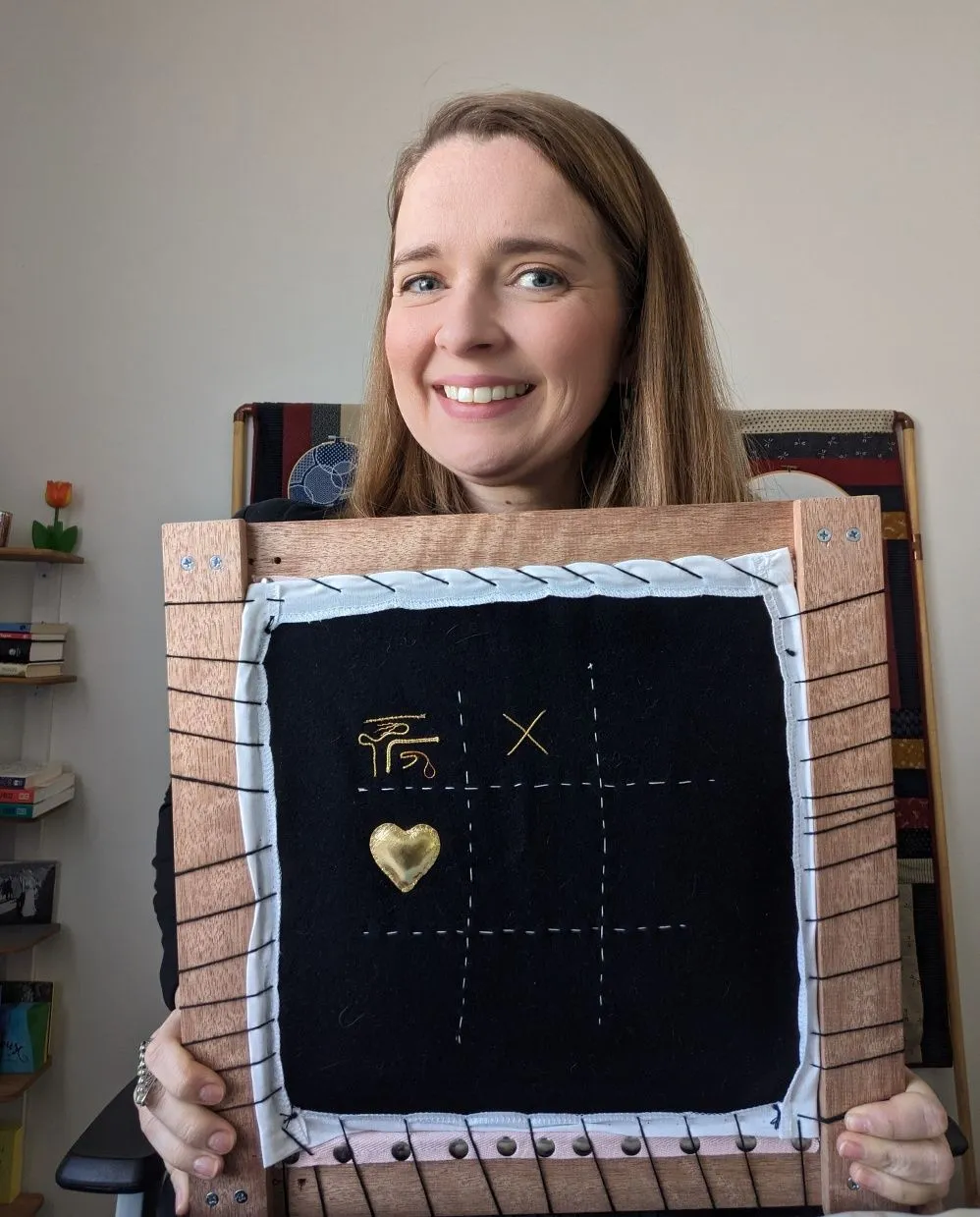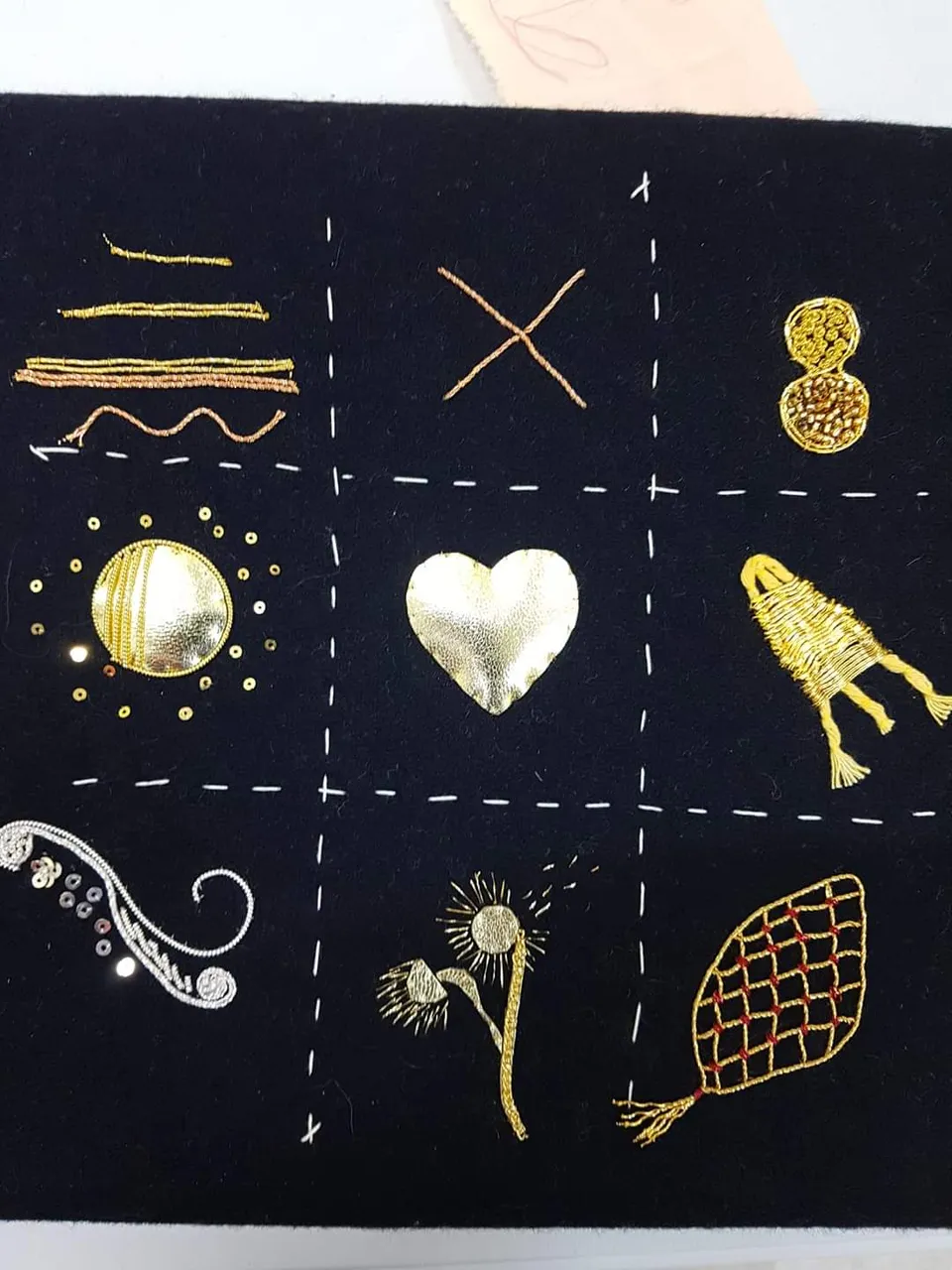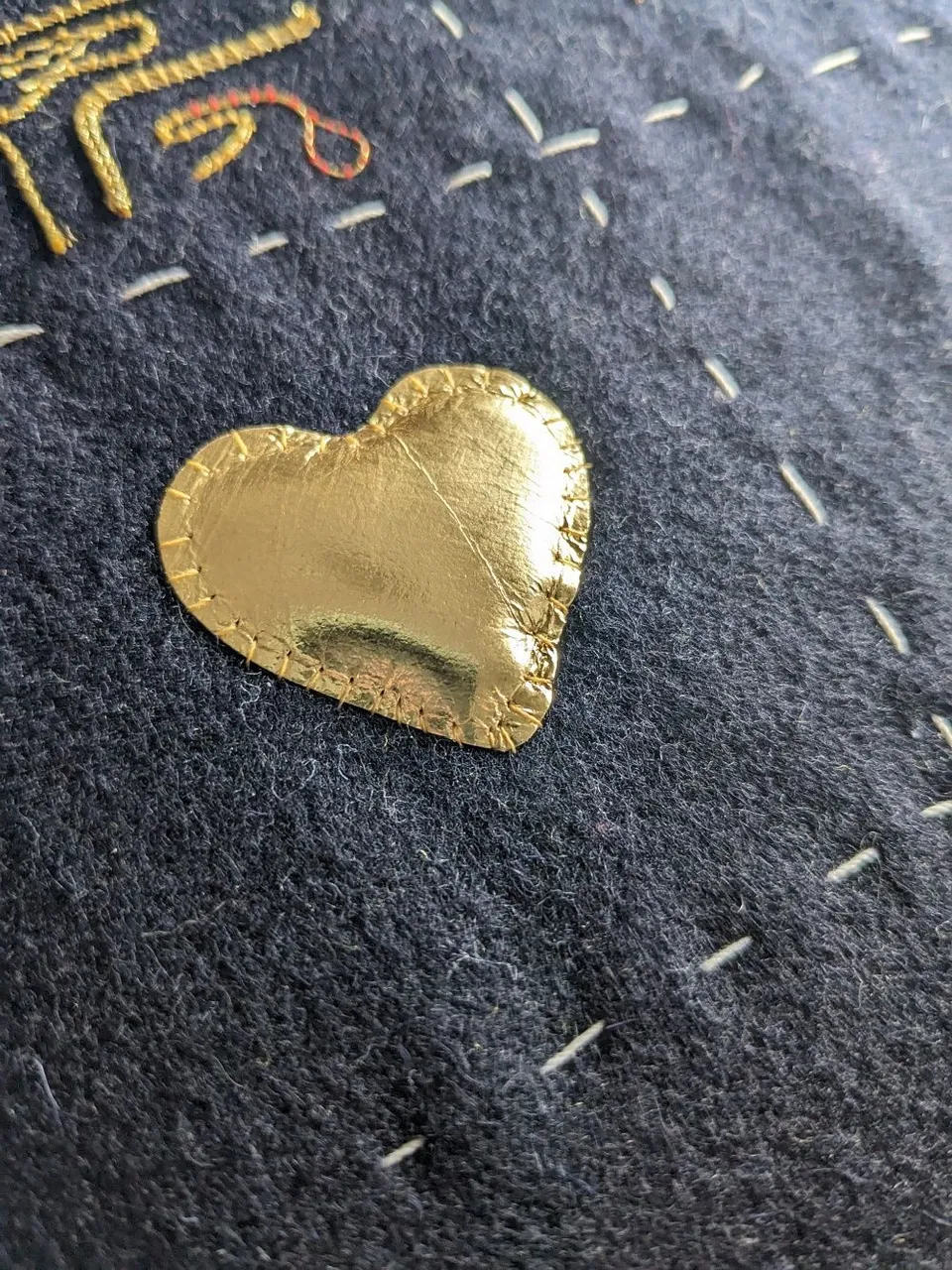Goldwork is a type of surface embroidery using metal threads secured to fabric or backing.
Traditionally used on ceremonial garments and decorative wall hangings, and remembering the cost it was generally for nobility or religious uses. Lots of the portraits of Queens and Kings feature robes decorated with goldwork. Like the Phoenix portrait with Queen Elizabeth I

I'm not quite there yet...
The key feature that distinguishes goldwork embroidery are the metal 'threads’ have a huge variety of interesting textures. It isn’t just the metallic embroidery floss threads
- Purl is a more like a rounded wire coil
- Bright is like a geometric coil
- Jap/Japan is a fibre core wrapped in golden paper
- Rococco has a wavy texture like crimped wire
- Twist is strands of gold wrapped fibre twisted together
- Ribbon Plate is literal strips of metal in varying widths
And it’s the play between these textures and the different ways they reflect light that makes goldwork so interesting.

This is the completed sampler that we are aiming for
Most of the gold used is imitation due to cost constraints, and it isn’t just in gold, silver and copper are popular but you can get lots of coloured metal threads, the whole rainbow in fact.
As if goldwork wasn’t sparkly enough you can add sequins, beads, spangles, pearls, gemstones and all sorts of other shiny things.
Plus a piece doesn’t have to be entirely gold work, it combines beautifully with other surface embroidery and has a long history with silk embroidery in Asia and Europe.
I went to a beginners' Goldwork class held at the CWA last weekend with the Bathurst Embroidery Guild as teachers. We learned three techniques of the sampler squares with a second workshop being held in September.
What did I learn?
Framing
Firstly you need a tapestry frame. I’ve only ever used embroidery hoops. This needs to be drum tight with no possibility for slipping because you a passing quite thick ‘threads’ through tightly woven fabric. The frames I saw online were pretty expensive and I’m still not sure if goldwork will be an ongoing interest, so I made a DIY ‘slate frame’ using timber and wing nuts. My grand plan is for the size to be adjustable. But I think I’ll finish what I’m working on before making myself more work.
Once you have a frame you then need to attach your fabric onto it as tight as possible. The fabric was provided as part of our kit, a wool felt backed and bound (to help maintain the stretch and allow stitching only on the back).
Couching
I don’t think I’ve ever couched before. Couching is method of securing something to the front of the fabric without stitching through it - it’s laid on the surface and then secured to the fabric. In goldwork you cut lengths of metal thread and then using a separate silk or couching thread pass back and forth, looping over the thread.
What’s interesting is the different looks you can achieve just by varying the couching. Stitch side. Couching thread colour. Couching thread stitch pattern and direction. Doubling your strands or decorative top metal thread.

Padding
One of the common ways of using the reflective nature of gold work to create visual interest is adding padding or depth and varying that depth to lead the eye to certain areas.
We learned to layer felt to create a three-dimensional element, the heart - which is gold-covered kid (a softer version of leather) over three layers of increasing in size felt circles. Wool and cotton string can also be used for line work rather than shape work.

Time
Learning a new skill takes time and practice. Three tiny pieces in 4 hours! It doesn’t seem like much, but I’m way less overwhelmed and ready to dive into a larger practice piece before the second workshop so I can get some feedback and practice the skills I have learned. I think I’ll also add some secondary practice elements to the sampler.
The project idea I have is to create something along the lines of this art deco brooch I found on the Royal School of Needlework. I know I haven’t learned all the required skills yet like chipping and basketweave with hard string padding. But it’s delicate work so I might only be able to finish the sections I do understand and leave room for the skills from the next workshop.